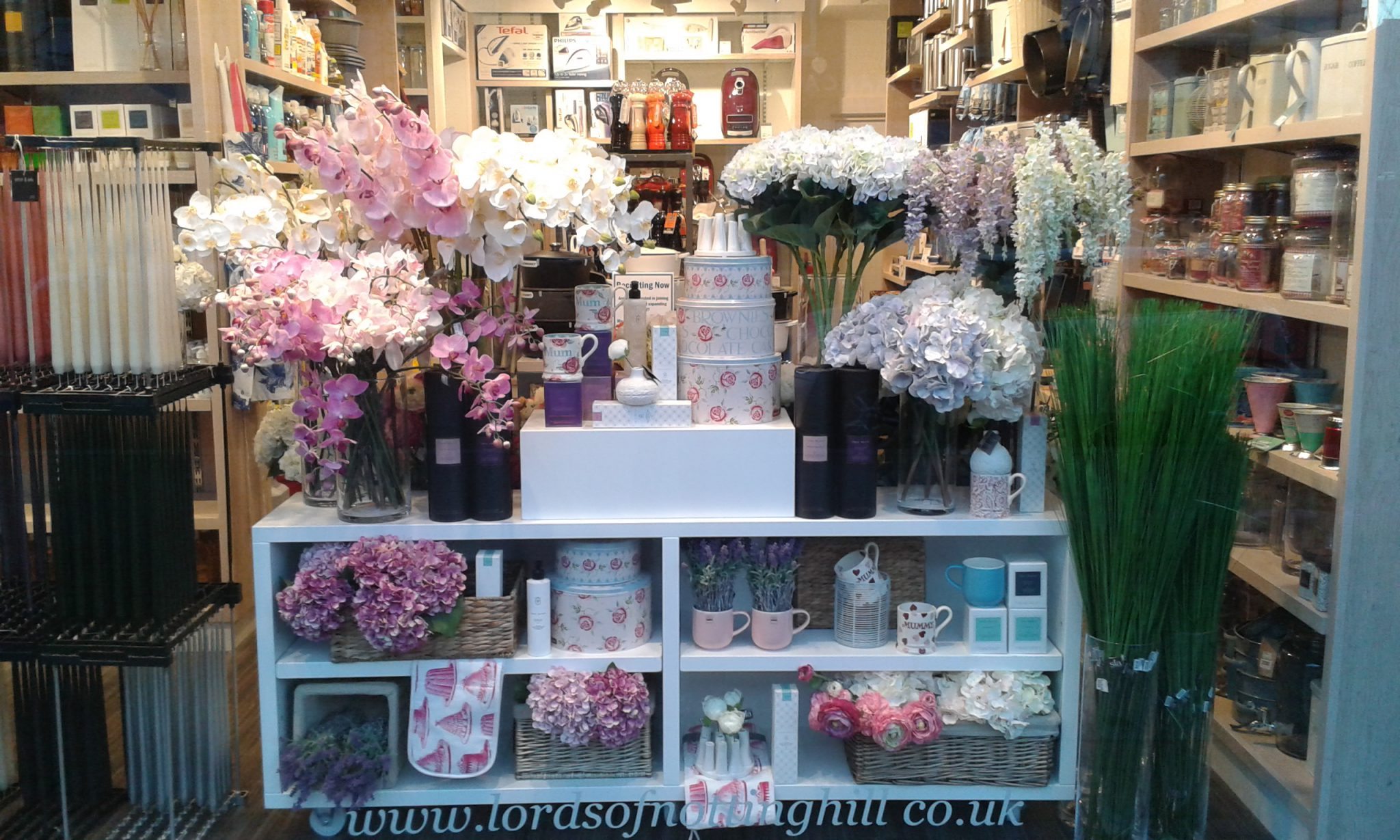Henrik Peter Reisby Nielsen on using color on website
Henrik is the CEO and Founder of CleverBinder, a productivity service that connects retailers and their customers via truly innovative software solutions. He also owns ReisbyConsult, a consulting company for retailers on design, color palattes, innovation and new technology.
“It takes a lot of effort, knowledge and careful planning to provide a rich shopping experience online,” Henrik says. “When looking at online store designs today, simple is better. More and more retailers are turning their backs on the maximalist paradigm that taught us to display as much content as possible on each screen, causing a cluttered interface with difficult navigation. If you add random use of multiple color palettes to this old way of doing things, then you’re not far from making a big mistake.”
Henrik believes that another common mistake retailers make is neglecting the fact that more and more customers use their mobile devices to shop today. “Mobile shopping is becoming increasingly popular, and it will only become more dominant over the coming years,” he explains. “And because smaller screens require a minimalist approach to design and use of colors in order to ensure a successful shopping experience, you have to adapt.”
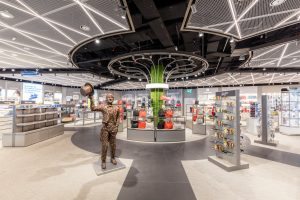 In fact, Henrik believes that if you fail to adopt this minimalist approach, you’ll have customers running out the virtual door of your online store.
In fact, Henrik believes that if you fail to adopt this minimalist approach, you’ll have customers running out the virtual door of your online store.
Branding is something that Henrik works with every day, and he believes that color is the visual component people remember the most about a brand.
“Many of the most recognizable brands in the world rely on color as a key factor in their instant recognition,” he says. “So reflecting your brand’s color in your web design is a wise decision, but this doesn’t mean that retailers should feel constrained to using only the company’s color.”
Henrik’s advice is to use palettes as an organizational tool for navigation. After all, the main aim online is to have customers quickly navigating your website and easily finding the products for which they are looking. “Use colors to emphasize particular elements in the web design,” he says. “For navigational purposes, colors can help establish the information hierarchy on a website and lead the customer by the hand to the checkout.”
Again, the message is clear: coloring carefully.
“Covering a website in lots of colors will not do the trick,” Henrik warns. “This will result in chaotic and disturbing screens. Instead, use subtle, monochromatic schemes to create a both visually appealing and calm expression. Pick a suitable base color, like the brand color, and start playing with different hues and saturations.”
 Often it’s as simple as thinking about what works in a brick and mortar store and then applying the same principles to your online presence. “The most stylish and creative ‘window displays’ (aka your home page) will get a potential customer’s attention and make them interested in what you are selling,” Henrik says.
Often it’s as simple as thinking about what works in a brick and mortar store and then applying the same principles to your online presence. “The most stylish and creative ‘window displays’ (aka your home page) will get a potential customer’s attention and make them interested in what you are selling,” Henrik says.
“A clean, organized store design (aka your website) will help push products. Use images and colors to display the individual product and its context. Make sure to invest time and resources in professional product shots and organize them in color groups. This will make it easier to run campaigns based on seasonal color themes or cross-reference related products according to color. Providing the customer with the option to search for products by color is also a great way to improve sales.”
It’s also important to keep up with current trends in the market place—you need your store to reflect what is going on in society and online if you want to be popular.
“One of the biggest web design trends of 2016 is the use of vibrant colors,” says Henrik. “This goes for the retail industry in general, as well. Today we are seeing more bright colors being implemented in e-commerce, an industry historically predominated by black-and-white. The appeal of the vibrant color trend is that it can be applied in many different ways and to different elements and product lines. One of the main reasons for this shift is the general availability of high definition displays—more pixels per inch allow for a much more distinct color palette.”
 So what does this mean for retailers? “Customers are now accustomed to seeing and navigating upon colorful, digital platforms, and they expect to be met with visually appealing interfaces when they enter a website,” says Henrik.
So what does this mean for retailers? “Customers are now accustomed to seeing and navigating upon colorful, digital platforms, and they expect to be met with visually appealing interfaces when they enter a website,” says Henrik.
In other words, a great website with great use of color can help retailers convert someone browsing, into someone buying.
Henrik’s top 3 websites for some color inspiration:
Wolfgang Gruschwitz, on using color in creating retail spaces
With expertise in retail architecture and design, Wolfgang Gruschwitz leads his own company, Gruschwitz GmbH, an international office for design and architectural services.
Having spent decades working in retail architecture and design, Wolfgang spends a lot of time assessing how color affects customers and helping retailers clear the way for a path to purchase.
“In retail, everything is based upon attraction, and that means it’s also about the story behind the logo or brand,” he says. “If your company has a worthy, special, strong brand—keep your use of color pure and simple, rather than loud, eye-catching and garish. Consider colors such as dark blue, red and grey, black or totally bright white or a mixture of black and white. Compare it to life situations: for instance what did you wear for a candle-lit dinner or a visit in the Vienna Opera Ball? Keep it classy.”
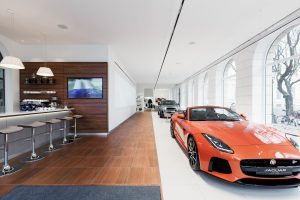 On the other hand, Wolfgang says, if your brand is crazy, fancy and fashionable, brimming with lots of ideas and all about stimulating adventure, then your color code can be totally different. “Think neon and bright colors,” he says. “Think about light and movement. Again, look at life. In the EXPO Milan 2015 for instance, the COOP store (an Italian food store) had a live color facade built with 3D prints and moving color being continually injected into it. It absolutely captured their brand.”
On the other hand, Wolfgang says, if your brand is crazy, fancy and fashionable, brimming with lots of ideas and all about stimulating adventure, then your color code can be totally different. “Think neon and bright colors,” he says. “Think about light and movement. Again, look at life. In the EXPO Milan 2015 for instance, the COOP store (an Italian food store) had a live color facade built with 3D prints and moving color being continually injected into it. It absolutely captured their brand.”
Wolfgang believes that if your company is more in step with the mass market, then your color code has to be dominant, and this means using colors like red or yellow. “If your goods are cheap, you need cheap colors like yellow, orange and bright red. If you are on more of a middle-class level then think about full red, warm grey, and muted versions of yellow,” he says.
After decades spent helping clients to choose and use color in retail, Wolfgang believes that colors have a similar influence on human beings to fragrance.
“Colors can stimulate you and calm you down,” he says. “They can activate and relax you, they can make you faster and they can slow you down. So color codes are very important in the retail design industry. Always be aware that if you use colors, you are always offering a statement or your opinion—your pricing, attitude and so much else. By using color, you are sending messages out into the world. For example, violet is more for funerals, pink is more for girls. The effects created by color are not only limited to the human brain, as animals can also be affected by colors. For instance, bees head to yellows and oranges – black flies like red and bright colors.”
Just as Henrik warns to always be careful with color on websites, Wolfgang has the same advice when it comes to choosing colors for your brick and mortar store—those choices can make or break your business.
Wolfgang’s top 3 tips for using colors in creating retail spaces:
1. Look for expressions in colors that convey your company’s characteristics.
2. Colors should only be used in designated areas and in merchandising/fascination points.
3. Do you have a brand color? If you do, then use it.
Martin M. Pegler, on using color in window displays
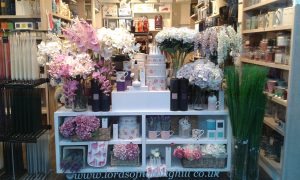 A leading expert in his field for over 60 years, Martin M. Pegler has been a professor for 30 years at the Fashion Institute of Technology in New York in the Display & Exhibit Design Department.
A leading expert in his field for over 60 years, Martin M. Pegler has been a professor for 30 years at the Fashion Institute of Technology in New York in the Display & Exhibit Design Department.
“When emphasizing a color in a window display be sure you use a strong color or color scheme, and do not detract from that featured color by adding any other colors,” he advises. “You can show a variety of products as long as you keep that color dominant and strong. Use lighting that will enhance the color and a background that helps make the color story easy to ‘read’. When you change your display, change your color story as well. If red was featured maybe switch to black and white for the next promotion—or green or blue. Make sure that the color change is obvious and quickly registers with the passers-by.”
This, he knows, signals change and the new products available in your store.
“When featuring a color in your up-front display area—(window or interior feature space)—make sure you keep the same color dominant in the area where the products are lined up for inspection or handling. You could do a secondary display set-up—similar but smaller than your up-front display—on a table in front of the stocked area. Spotlight that display so that the shopper will be drawn to the area, thus leading them from the primary introduction to the colored product to the space where that product is actually stocked and available.”
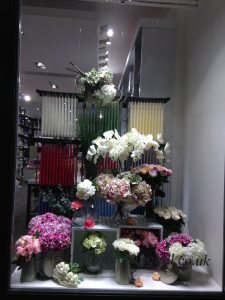 In retail, special events or seasonal celebrations, such as Mother’s Day, Christmas or Easter, always have to be considered carefully in terms of being represented by color, and it can be hard deciding whether to stick with the pack or branch out on your own and make your own bold statements.
In retail, special events or seasonal celebrations, such as Mother’s Day, Christmas or Easter, always have to be considered carefully in terms of being represented by color, and it can be hard deciding whether to stick with the pack or branch out on your own and make your own bold statements.
“Whether or not to use traditionally applied colors to celebrate holidays or events in your displays depends upon your store, brand identity and your clientele,” says Martin. “If your brand is super sophisticated, elegant and chic, then I think your customers would expect something different; not red and green for Christmas or the usual line-up of pastels for Easter. If you are trying to up-scale your store’s look, you might choose all white with some gold or silver against a midnight blue backdrop for Christmas displays. Or go for a sharp yellowish green complemented with gold or hot pink and white for Easter, and this will still be a bit traditional. After all, your clients will know which holiday is coming up and with all the red and green everybody else is screaming, you might want to play your own color game and stand out!”
Martin’s top 3 tips when using colors in window displays:
1: Be brave – dare to be different.
2: Follow through with the color used in window displays in your store.
3: Have fun and spread the pleasure!
